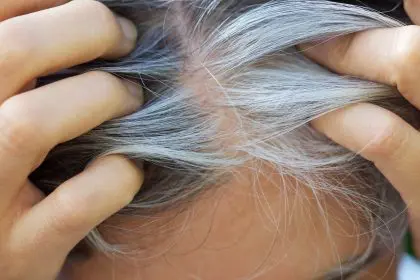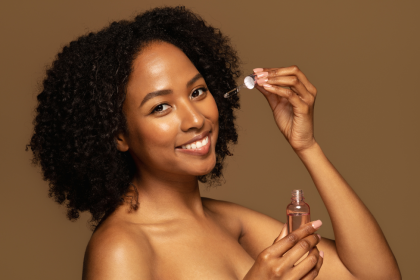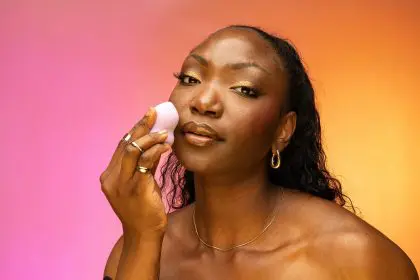Your skin isn’t just a protective barrier covering your body, it’s actually your largest emotional organ, constantly responding to your internal psychological state with visible changes that reveal your feelings to the world. Every emotion you experience triggers a cascade of physiological responses that show up on your skin within minutes, creating a real-time display of your mental and emotional health.
The connection between emotions and skin reactions goes far deeper than occasional blushing or stress breakouts. Your emotional state influences everything from your skin’s oil production and inflammation levels to its healing capacity and aging rate. What you’re feeling inside becomes written across your face and body in ways that are both immediate and long-lasting.
Understanding this mind-skin connection reveals why traditional skincare approaches often fail to address persistent skin problems and why emotional wellness might be the missing piece in achieving the healthy, radiant complexion you’ve been seeking through countless products and treatments.
Why your skin is hardwired to your emotional brain
Your skin and nervous system develop from the same embryonic tissue during fetal development, creating lifelong connections between your emotional state and skin function. This shared origin means your skin literally thinks and feels, responding to emotional stimuli with the same chemical messengers used by your brain.
Nerve endings throughout your skin communicate directly with your brain through complex networks that carry emotional information both ways. When you feel stressed, anxious, or excited, these neural pathways immediately transmit signals that change skin temperature, oil production, blood flow, and inflammatory responses.
The skin contains its own production centers for stress hormones, neurotransmitters, and inflammatory compounds, essentially functioning as a peripheral extension of your nervous system. This means your skin can generate emotional responses independently while also receiving signals from your central nervous system.
Your facial muscles, controlled by emotional centers in your brain, create micro-expressions that occur thousands of times daily, gradually etching your most frequent emotional states into permanent lines and wrinkles that serve as a map of your psychological patterns.
The instant chemistry of emotional skin reactions
When you experience strong emotions, your body releases a cocktail of hormones and neurotransmitters that reach your skin within seconds, triggering immediate visible changes. Adrenaline causes blood vessels to dilate or constrict, creating flushing or pallor, while stress hormones alter oil production and inflammatory responses.
Embarrassment triggers a specific vascular response that floods facial capillaries with blood, creating the characteristic redness of blushing that can spread to your neck and chest. This response is so rapid and involuntary that it often occurs before you’re consciously aware of feeling embarrassed.
Fear and anxiety cause blood to be redirected away from your skin toward vital organs, creating the pale, cold, clammy appearance associated with terror. Your skin literally reflects your body’s preparation for danger by prioritizing blood flow to essential survival systems.
Joy and excitement increase circulation throughout your skin, creating the warm glow and radiant appearance that makes people look more attractive when they’re happy. This enhanced blood flow delivers more nutrients and oxygen to skin cells, creating an immediate improvement in skin quality and appearance.
How chronic stress ages your skin faster than time
Chronic elevation of cortisol and other stress hormones breaks down collagen and elastin, the structural proteins that keep your skin firm and youthful. This stress-induced aging can make your skin appear years older than your chronological age, with the damage accumulating over months and years of emotional stress.
Stress hormones also suppress your skin’s natural repair mechanisms, slowing cell turnover and healing processes that normally keep your skin looking fresh and healthy. This impaired recovery capacity means that damage from sun exposure, pollution, and other factors accumulates more rapidly in chronically stressed individuals.
The inflammation caused by persistent stress creates a hostile environment for healthy skin cells while promoting the breakdown of supportive structures. This chronic inflammatory state accelerates all visible signs of aging while making skin more susceptible to disorders and infections.
Sleep disruption from emotional stress prevents the nighttime repair processes that are crucial for skin regeneration, creating a compound effect where stress both damages skin directly and prevents the recovery that normally occurs during rest.
The breakout connection that runs deeper than surface oil
Emotional stress triggers hormonal cascades that increase oil production in your sebaceous glands, but the relationship between emotions and acne goes much deeper than simple excess oil. Stress hormones also alter the composition of skin oils, making them more likely to clog pores and support bacterial growth.
The inflammation response triggered by emotional stress creates conditions in your skin that promote acne development even in areas that aren’t particularly oily. This stress-induced inflammation can turn minor pore blockages into inflamed, painful breakouts that take weeks to resolve.
Cortisol and other stress hormones also suppress immune function in your skin, reducing your body’s ability to fight off acne-causing bacteria while promoting the survival of harmful microorganisms that contribute to breakout severity and duration.
The compulsive behaviors often associated with stress, including touching your face, picking at skin, and neglecting skincare routines, create additional factors that compound the direct hormonal effects of emotional stress on acne development.
Why anxiety literally makes your skin crawl
Anxiety disorders can trigger a condition called formication, where you feel like insects are crawling on your skin despite nothing being there. This sensation results from anxiety-induced changes in nerve signaling that create false tactile sensations throughout your skin.
The hypervigilance associated with anxiety makes you more aware of normal skin sensations like clothing friction, temperature changes, or minor itches, amplifying these feelings until they become overwhelming and distracting from normal daily activities.
Anxiety-related muscle tension affects facial muscles and can cause skin tightness, headaches, and changes in facial expression that become etched into your appearance over time. The chronic tension literally reshapes your face to reflect your anxious state.
The breathing changes that accompany anxiety, including hyperventilation and breath-holding, affect blood flow and oxygen delivery to your skin, creating sensations of tingling, numbness, or heightened sensitivity that can trigger more anxiety in a self-perpetuating cycle.
How depression dulls your natural skin glow
Depression affects skin appearance through multiple pathways, including reduced circulation that creates the pale, lackluster complexion often associated with depressive episodes. The decreased blood flow means less oxygen and nutrients reach skin cells, creating a visible loss of vitality.
The sleep disturbances common in depression prevent the restorative processes that normally occur during deep sleep, when growth hormone promotes skin repair and cellular regeneration. This disrupted recovery cycle leads to premature aging and poor skin texture.
Decreased motivation and self-care during depressive episodes often leads to neglected skincare routines, poor nutrition, and reduced hygiene practices that compound the direct physiological effects of depression on skin health and appearance.
The inflammatory processes associated with depression create systemic inflammation that affects skin health, promoting conditions like eczema, psoriasis, and delayed wound healing while contributing to accelerated aging processes.
The anger response that inflames everything
Anger triggers immediate increases in blood pressure and circulation that can cause facial flushing, neck redness, and visible throbbing in temples and forehead veins. This vascular response is so dramatic that angry facial expressions often remain visible for minutes after the emotional trigger has passed.
Chronic anger keeps your body in a state of inflammatory activation that shows up in your skin as persistent redness, increased sensitivity, and a propensity for inflammatory skin conditions. The ongoing inflammation from frequent anger episodes can contribute to premature aging and skin disorders.
The muscle tension associated with anger affects facial expressions and can create permanent frown lines, jaw tension, and forehead furrows that become more pronounced with repeated angry episodes. Your face literally holds the memory of frequent anger in its structure.
Anger also triggers stress hormone release that affects oil production and can contribute to adult acne, particularly along the jawline and lower face where tension is commonly held during angry emotions.
Why love and attraction change your skin chemistry
Romantic attraction and falling in love trigger the release of hormones like oxytocin and dopamine that improve circulation and create the characteristic glow associated with people in love. This improved blood flow enhances skin appearance while reducing stress hormones that normally contribute to skin problems.
The endorphins released during positive emotional states act as natural painkillers and mood elevators while also promoting healing and cellular repair in your skin. This creates an upward spiral where positive emotions improve skin appearance, which in turn supports continued positive emotional states.
Physical touch and intimacy stimulate the release of hormones that promote skin health and healing, explaining why people in healthy relationships often have better skin quality than those who are socially isolated or in stressful relationships.
The stress reduction that comes from secure emotional connections helps normalize cortisol levels and reduce the inflammatory processes that contribute to skin aging and disorders, creating long-term benefits for skin health and appearance.
How social emotions show up on your skin
Social anxiety triggers specific patterns of blushing and sweating that can become more pronounced with repeated exposure to anxiety-provoking social situations. The anticipation of social interaction can trigger skin reactions before the actual social encounter occurs.
Shame and guilt often manifest as specific patterns of facial flushing, neck redness, and chest blotching that can persist for extended periods after the emotional trigger. These visible reactions can create additional social anxiety about the physical manifestations of emotions.
Social rejection and isolation trigger stress responses that show up in your skin as decreased healing capacity, increased inflammation, and changes in skin texture and appearance that can make social reintegration more challenging.
The confidence and self-esteem associated with positive social interactions improve posture, facial expressions, and overall skin appearance through both direct physiological effects and improved self-care behaviors.
The healing power of emotional wellness for skin
Stress reduction techniques including meditation, deep breathing, and mindfulness practices can produce measurable improvements in skin appearance within weeks by reducing inflammatory hormones and improving circulation. These practices work from the inside out to create lasting skin health improvements.
Regular exercise provides dual benefits for skin health by reducing stress hormones while improving circulation and promoting the cellular repair processes that keep skin looking youthful and healthy. The endorphins released during exercise also contribute to the positive emotional states that support skin health.
Quality sleep optimization addresses both the direct skin repair processes that occur during rest and the emotional regulation that comes from adequate sleep, creating compound benefits for both skin appearance and emotional well-being.
Social connection and emotional support provide measurable benefits for skin health through stress reduction, improved immune function, and the positive hormonal changes that come from secure relationships and community involvement.
The skincare routine that starts with emotional care
Traditional skincare approaches that focus only on topical treatments often fail because they don’t address the underlying emotional factors that drive skin problems. Effective skin health requires attention to both external care and internal emotional wellness.
Identifying and managing emotional triggers for skin problems can be more effective than expensive skincare products for addressing persistent issues like acne, eczema, and premature aging that have emotional components.
The timing of skincare routines can be optimized to work with your body’s natural circadian rhythms and stress patterns, providing maximum benefit when your skin is most receptive to healing and repair processes.
Creating positive emotional associations with skincare through mindful, nurturing routines can enhance the effectiveness of products while providing stress relief and emotional regulation benefits that support overall skin health.
Your skin as an emotional barometer
Learning to read your skin’s emotional signals can provide valuable insights into your psychological state and help you identify stress patterns, emotional triggers, and mental health changes before they become overwhelming or create lasting damage.
The skin changes associated with different emotions can serve as early warning signs for mental health issues, relationship problems, or life stresses that need attention before they create more serious consequences for your health and well-being.
Understanding the mind-skin connection empowers you to take a more holistic approach to skin health that addresses both the symptoms you see in the mirror and the emotional factors that create and perpetuate skin problems.
Your face tells your emotional story
Every day, your skin serves as a canvas that displays your internal emotional landscape to the world. The flush of embarrassment, the glow of happiness, the pallor of fear, and the inflammation of chronic stress all tell the story of your psychological state through visible changes that others can read instinctively.
This emotional-skin connection isn’t a weakness or something to hide, it’s a fundamental aspect of human communication and connection that has evolved over millions of years. Your skin’s emotional responsiveness helps you connect with others and provides important information about your mental and physical health.
Taking care of your emotional wellness isn’t just about feeling better mentally, it’s also one of the most effective approaches to achieving the healthy, radiant skin that reflects your inner vitality and emotional balance. Your best skincare routine might start with your emotional care routine.















